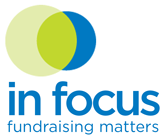Recent Posts
- The Secret Sauce: Strategies & Tactics to Engage Institutional Funders
- What Are Your Donors Saying When They Go Quiet? And How Should You Respond?
- Maximizing Year-End Giving: Strategies for a Successful Fundraising Campaign
- Navigating 2024’s Unique Year-End Fundraising Landscape
- Latest Giving USA Data
4 Tips to Deal with Reluctant Fundraisers on Your Board
February 6, 2017One of the biggest challenges for nonprofits are board members who won’t fundraise.
Well, a board member may say she will, but then comes up with a laundry list of excuses for why one prospect isn’t likely to give, the timing isn’t right to call a lapsed donor, or the ask amount for a longtime supporter is way off.
While some of the feedback may very well be warranted, consider stepping back and examining why there’s reluctance.
Very often, there’s more going on than a busy schedule or insufficient prospect research. Instead, the board member may not be comfortable doing the needed outreach, and may not want to admit to that either!
Here are some tips associated with the most common challenges to getting a board member to reach out to or meet with a donor or prospect:
1) I’m not sure how to begin. Have you provided training on prospect/donor outreach? Sometimes the initial call or email is a roadblock because your board member just isn’t sure how the process works. Either one-on-one or as a group, walk board members through what you hope they’ll achieve and consider different scenarios.
2) I love our mission, but I don’t know how to talk about what we do! Before they can ask for support, a board member has to be able to talk about your organization’s mission and impact. Make sure to take some time at least once each year to help your board members refine their elevator pitch and for new board members to see how it’s done and practice!
3) I often get cold feet right before the ask. It’s important to provide an opportunity for board members to run through a script and think through answers to questions they might be asked. Just offering a script is often not enough! Taking the time to discuss the approach and how to deal with deflection or rejection can make a big difference.
4) I got a YES! Now what? Whether asking a prospect to join a committee or make a donation, board members must be clear on what they should do after they’ve made an ask. Do they have a pledge form to leave with the prospect? Who should follow up if the answer is “maybe?” If they got a “no,” how should they respond? Covering all of these bases will help ensure your board member feels comfortable getting to – and through – the ask.
Of course, not all board members want to reach out to prospects or donors. Remember that an important development goal should always be to have 100% board participation in fundraising. That means all board members should make a donation to your organization at some level and they should participate in the fundraising process in some way. That could be making an ask, hosting an event, identifying top prospects, making thank you calls, or any number of other activities.

